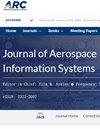Data-Driven Departure Flight Time Prediction Based on Feature Construction and Ensemble Learning
IF 1.5
4区 工程技术
Q2 ENGINEERING, AEROSPACE
引用次数: 0
Abstract
Temporal–spatial resource optimization within the terminal maneuvering area has become an important research direction to meet the growing demand for air traffic. Accurate departure flight time prediction from taking off to the metering fixes is critical for departure management, connecting the surface operations, and overhead stream insertion. This paper employs ensemble learning methods (including bagging, boosting, and stacking) to predict departure flight times via different metering fixes based on four feature categories: initial states, operating situation, traffic demand, and wind velocity. The stacking method employs a linear regressor, a support vector regressor, and a tree-based ensemble regressor as base learners. The Guangzhou Baiyun International Airport case study shows that the stacking method proposed in this work outperforms other methods and could achieve satisfactory performance in departure flight time prediction, with a high prediction accuracy of up to 89% within a 1 min absolute error and 98% within a 2 min absolute error. Besides, the affecting factors analysis indicates that the operation direction, flight distance, and traffic demand in different areas significantly improve prediction accuracy.基于特征构建和集成学习的数据驱动起飞时间预测
终端机动区域的时空资源优化已成为满足日益增长的空中交通需求的重要研究方向。从起飞到计量固定,准确的起飞时间预测对于起飞管理、连接地面作业和架空流插入至关重要。本文采用集成学习方法(包括bagging、boosting和stacking),基于初始状态、运行情况、交通需求和风速四个特征类别,通过不同的计量固定来预测起飞时间。叠加方法采用线性回归器、支持向量回归器和基于树的集成回归器作为基础学习器。广州白云国际机场的案例研究表明,本文提出的叠加法在离港飞行时间预测方面优于其他方法,在1 min绝对误差内预测精度可达89%,在2 min绝对误差内预测精度可达98%。此外,影响因素分析表明,不同区域的运行方向、飞行距离和交通需求显著提高了预测精度。
本文章由计算机程序翻译,如有差异,请以英文原文为准。
求助全文
约1分钟内获得全文
求助全文
来源期刊

Journal of Aerospace Information Systems
ENGINEERING, AEROSPACE-
CiteScore
3.70
自引率
13.30%
发文量
58
审稿时长
>12 weeks
期刊介绍:
This Journal is devoted to the dissemination of original archival research papers describing new theoretical developments, novel applications, and case studies regarding advances in aerospace computing, information, and networks and communication systems that address aerospace-specific issues. Issues related to signal processing, electromagnetics, antenna theory, and the basic networking hardware transmission technologies of a network are not within the scope of this journal. Topics include aerospace systems and software engineering; verification and validation of embedded systems; the field known as ‘big data,’ data analytics, machine learning, and knowledge management for aerospace systems; human-automation interaction and systems health management for aerospace systems. Applications of autonomous systems, systems engineering principles, and safety and mission assurance are of particular interest. The Journal also features Technical Notes that discuss particular technical innovations or applications in the topics described above. Papers are also sought that rigorously review the results of recent research developments. In addition to original research papers and reviews, the journal publishes articles that review books, conferences, social media, and new educational modes applicable to the scope of the Journal.
 求助内容:
求助内容: 应助结果提醒方式:
应助结果提醒方式:


